<< Learning Center
Media Accessibility Information, Guidelines and Research
Described and Captioned Media Program: Seventy Years of Progress
(1946-2016)
By Bill Stark
Introduction
Motion pictures were made inaccessible to millions of deaf and hard-of-hearing people in 1927, the year sound was introduced to the silent screen. Nearly twenty years later, there was an experiment to put captions on glass slides and project them onto a second screen adjacent to the film projection screen. It was impossible to watch two screens simultaneously, but the concept was thrilling. In a short time, a technique was developed to etch captions directly onto a film. This led to the 1949 formulation of Captioned Films for the Deaf (CFD) as a private nonprofit endeavor. CFD became federal law in 1958, with the law being amended in 1962 to incorporate educational films.

The program has undergone several name changes through the years. In 1984 CFD became Captioned Films/Videos for the Deaf (CFV), in 1991 dropping "for the deaf" from its name in deference to the hard-of-hearing community. In 1998 CFV became the Captioned Media Program (CMP), and in 2006 CMP became the Described and Captioned Media Program (DCMP). The 2006 change was due to the government mandate for the program to also serve children who are blind or visually impaired through the description of educational videos, along with captioning these same videos for those needing that access. Through the years, use of the program has been free to registered members.
The newly required service to the population with a vision loss came as no surprise. CFD was formed to provide access for persons with a hearing loss, and for nearly fifty years this population alone benefitted from the program. Yet, the persons primarily responsible for CFD becoming a federal law in the 1950's had looked to the model of the existing Talking Books for the Blind program. Also, in the early years of CFD, as depositories for educational captioned films were located at several residential schools providing services to both students who were deaf as well as those who were blind, some teachers of visually impaired students used captioned films, ironically, because of their auditory content. Later, in 1992, the National Association of the Deaf (NAD), recipient of the contract award for CFV selection and captioning in 1991, conducted a feasibility study relating to the provision by the government of a descriptive loan service for persons who are visually impaired. Results indicated the need for and strong support of such a service. It was inevitable that the program expand to include it, as it did in 2006.

While CFD founders envisioned that federal oversight and channeling of funding should be provided by the Library of Congress, that was not to be. By whatever name, since the program became federal law, it has always been under the direction of the U.S. Department of Education (ED). Today the program is under the ED Office of Special Education Programs, Office of Special Education and Rehabilitation Services, and funding is provided through the Individuals with Disabilities Education Act (IDEA). The current Project Officer is Jo Ann McCann.
Seventy years after the original CFD federal law was passed, the program is still going strong. DCMP was funded for an additional five years (2016-2021). Along the way, there have been tremendous accomplishments by the program in captioning, description, and educational technology. The 1958 CFD law has been called the dawn of educational technology for children with a hearing loss, and advancements in education of these children and use of visual media from that point until 1990 were often due to CFD and were nothing short of phenomenal.
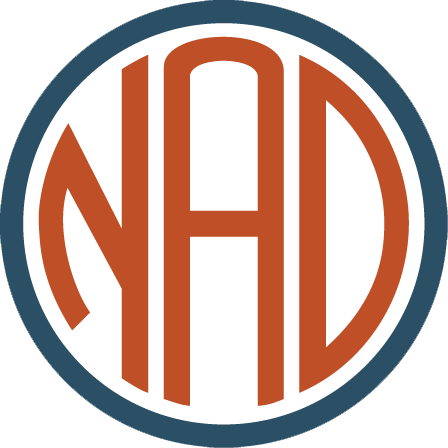
For the last twenty-five years under NAD management, CFV/CMP/DCMP has continued to be at the forefront of educational technology development as it pertains to those with a hearing or vision loss. More than one person outside the NAD has referred to the DCMP as the "Netflix of education," a high compliment regarding not only our extensive offering of desirable resources, but also efficient delivery of products through mail and digital means.
Timeline and Narrative
1946
The idea for captioning films is spawned in a doctoral dissertation by Ross Hamilton, a student at Columbia University and an administrative assistant to Dr. Clarence D. O'Connor, director of the Lexington School for the Deaf in New York City. Dr. O'Connor is intrigued by the concept, and he in turn interests Dr. Edmund B. Boatner, superintendent of the American School for the Deaf (ASD) in West Hartford, Connecticut. Boatner later sees a short film that was captioned by Hamilton using the same separate screen technique as J. Arthur Rank, and he concludes it is not a practical way to caption films.
1947
Emerson Romero, a deaf man whose cousin was the famous movie actor Cesar Romero, develops the first captioning of a film by putting captions between picture frames. This splicing in of text is similar to technique used to show dialogue in silent films. Romero's stage name is Tommy Albert, and he is one of five deaf actors appearing in silent films. He captions some movies and circulates his films to "deaf clubs" and residential schools.
1949
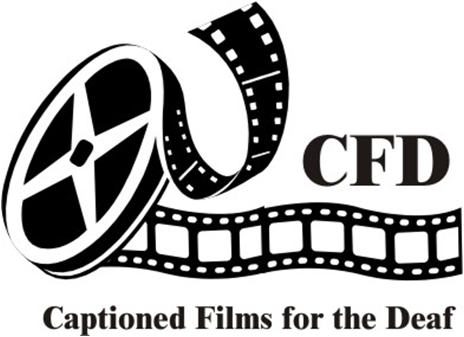
British producer J. Arthur Rank etches open captions onto glass slides, which appear on a smaller screen to the bottom left of the screen the movie is projected on. When the film Dawn Departure, which contains Rank's method of captioning, has its premier showing in London, it's reported that several hundred deaf people line up to gain entrance to the theater.
Shortly after Rank's experiment, an entirely new method of captioning films is devised in Belgium, which involves etching captions directly onto a finished print of the film. Titra Film Laboratories in New York is successful in securing a franchise for the Belgian process for the whole United States.
Edmund Boatner and Clarence O'Connor are thrilled with the Belgian process and organize Captioned Films for the Deaf (CFD). CFD is a private nonprofit business, dependent on donations and gifts for financial support. Initial funding is provided by the Junior League of Hartford, in the form of two grants totaling $7,500. A CFD board of directors is established, and it includes luminaries such as actress Kathryn Hepburn and the wife of actor Spencer Tracy.
1951
Working with Boatner at the American School for the Deaf, J. Pierre Rakow, a deaf man and supervising teacher of the Vocational Department at the school, learns how to caption films and then works to persuade people in the film industry to allow captioning of their products. Rakow is CFD's "indispensable man," overseeing day-to-day operations as well as teaching full time.
America the Beautiful is the first film to be open captioned in America utilizing the Belgian technique. It is a 25-minute production that Warner Brothers makes for $100,000 and presents to the government to sell war bonds. The Department of Treasury donates it to CFD, and it is placed in circulation two years later.
CFD purchases its first films: The Noose Hangs High and Scrooge. These circulate to the New York School for the Deaf and the Lexington School for the Deaf.
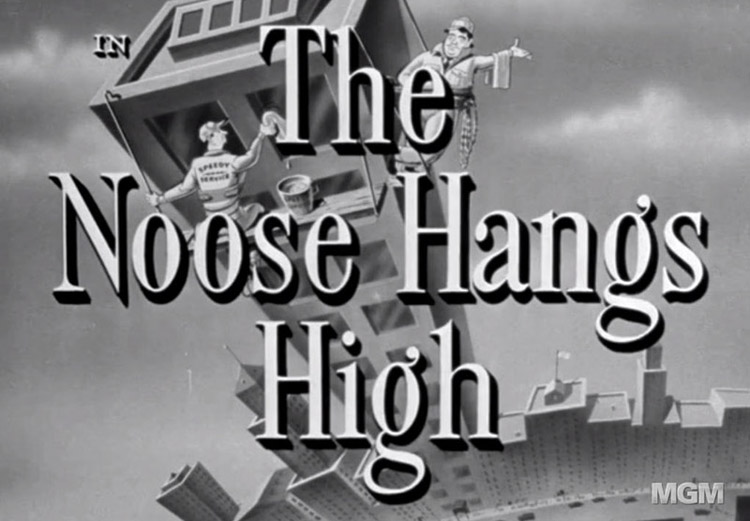
1955
CFD is incorporated under the laws of the state of Connecticut. It continues to seek donations, but without much success.
1957
CFD board member and businessman Graham Antony persuades Senator William Purtell, Connecticut, to introduce a bill in the U.S. Senate to establish an agency to procure, caption, and distribute suitable films for persons who are deaf. Purtell envisions that this agency will be operated by the Library of Congress. However, surprising to many, the Library of Congress resists the responsibility to manage the service.
1958
CFD becomes Public Law 85-905 as it passes the Senate and the House, with the modification that it will be managed by the Office of Education in the Department of Health, Education, and Welfare. Initial funding is $78,000.
John Gough, former superintendent at the Oklahoma School for the Deaf, is appointed to direct the program. To this point, CFD has developed 29 feature-length films, along with short subjects, and is circulating them among schools for the deaf.
1960
John Gough recruits Dr. Malcolm (Mac) Norwood to be the first CFD staff member who is deaf.
1962
Public Law 87-715 authorizes CFD to begin acquiring and captioning educational films. The budget for the program is $1.5M, but only a portion of that money goes into the selection, captioning, and distribution of films, as CFD is branching out into a myriad of telecommunications, educational technology, and education-related activities.
The first captioned educational film, Rockets: How They Work, opens the door to equal access to educational media for students who are deaf and hard of hearing. At a summer workshop, experienced teachers of the deaf write a lesson guide for this film and other captioned educational films. Each guide includes the learning goals for the production, ideas for teacher and student preparation for its use, and follow-up activities. Guides are printed, bound, and shipped to teachers across the country. (This annual guide-writing activity is destined to continue for over 40 years).
1964
A CFD project of five-year duration begins at Ball State University, the core of which are summer workshops for the development of curricular guidelines with related identified visual media and materials. Dr. Gilbert L. Delgado, principal of the California School for the Deaf, Berkley, is selected by John Gough to organize and supervise workshops.
Educational captioned films depositories were established in 65 residential schools throughout the country. Twenty-eight films were sent to these schools, and this marked the beginning of the provision of educational media to meet the special needs of deaf learners.
1965
CFD begins to purchase projectors and other equipment and distribute them to schools for the deaf.

The passage of the Elementary and Secondary Education Act (ESEA) makes possible further tremendous nationwide growth in school media equipment and materials availability. In tandem with CFD, ESEA equips nearly every classroom and media center in the country's residential schools. As these schools acquire the projection equipment, increasing demand for CFD captioned educational films results. Many of the 65 residential school educational film depositories were managed by trained media specialists whose salaries came from ESEA funding.
Meanwhile, the national distribution of captioned theatrical films is through three depositories that are established in White Plains (New York), Indianapolis, and Colorado Springs.
1966
PL 89-258 consolidates CFD into a new federal office renamed "Media Services and Captioned Films" (MSCF), a branch within the Bureau of Education for the Handicapped, U.S. Office of Education. Services are extended to other persons with disabilities. MSCF budgets are raised to $3M annually.
Four Regional Media Centers for the Deaf (RMCD) are established (New Mexico, Tennessee, Nebraska, and Massachusetts). The RMCDs adapt and produce various visual media (lipreading and speech-training 8mm films, filmstrips, programmed learning, video tapes, pictures, multimedia packages, and transparencies). Incredibly, over two million discrete items of media and instructional software were made available to teachers during this project. The centers also conduct training workshops and symposiums, and CFD depository managers are among the attendees.
John Gough arranges for the Conference of Executives of the American Schools for the Deaf (CEASD) to direct CFD film distribution and manage other aspects of the program. Dr. Howard Quigley becomes Executive Manager of CEASD, and performs the CFD responsibilities at a new CEASD office in Washington, DC. The budget is $66,000. This is a role CEASD is destined to play for CFD for nineteen years (1966-1985), with Joe Domich and then Len Novick being Project Directors for CFD. The budget increased to a high of $424,000 in 1985.
Gil Delgado moves to the CFD headquarters to be administrator of program initiatives, maintaining a role to provide oversite of the Ball State University activity. Doin Hicks replaces him as Ball State University summer workshop coordinator.
1969
John Gough retires, and Gil Delgado, who had been acting as an assistant to Gough, was named his successor to lead the CFD. The entire CFD captioned movie collection is housed in a warehouse-type facility in downtown Indianapolis. It is a two-shift operation, with many of the employees being graduates of the Indiana School for the Deaf. The depository is overseen by Val Brummett, Jr.
1971-1979
Gil Delgado moves to Gallaudet University, and Mac Norwood, later dubbed the "father of closed captioning," becomes Chief of MSCF in 1971.
Norwood has been with CFD almost from the time it became federal law, and played a key role in developing and refining captioning. He also trained others (including teachers of the deaf) to perform the task. His leadership lead to the development of captioning guidelines, manuals, and technical specifications that were used for years by CFD and are the initial blueprint for closed-captioning. Under his watch and MSCF funding: 1) The first National Conference on Television for the Hearing Impaired takes place in 1971 at the Tennessee RMCD. The two possible technologies for closed captioning of television programs debut; 2) All the initial research into TV captioning occurs, as does the creation of the first decoders and Line 21 captioning technology; 3) The TV "captioning industry" begins in 1972 with the forming of the Caption Center (now Media Access Group) at WGBH-TV in Boston, followed in 1979 by the National Captioning Institute (a nonprofit corporation) whose mission is to caption TV programs and produce decoders.
1980
CEASD begins the last three years of its nineteen years of managing CFD (selection, captioning, and distribution) as part of a new team with the Convention of American Instructors of the Deaf (CAID). CEASD and CAID form a new corporate entity named the Associations for Education of the Deaf (AED).
1983
The federal government breaks the CFD activity into two contracts: one for distribution and one for evaluation, selection, caption writing, and lesson guide production. AED loses its bid for film distribution management to Modern Talking Picture Service (MTPS), but maintains the contact for film selection and captioning. The MTPS headquarters are in New York, but CFD activities are primarily administered from offices in St. Petersburg, Florida. The movie and special interest depository is relocated in Florida, and the educational captioned films depositories remain in place in residential schools.
1984
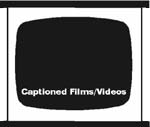
CFD introduces videocassettes and becomes Captioned Films/Videos for the Deaf (CFV).
1985
MTPS wins the second of two CFV contracts (for selection and captioning), having already won the distribution contract two years earlier. A few years later, the two contracts will revert back to being a single combined contract. MTPS is destined to manage the CFV activity for twelve years (1983-1991), overlapping with AED for two years (1983-1985). Don Zink and Mike Burke share CFV management responsibilities for MTPS.
1989
Ernie Hairston becomes Chief of the ED Captioning and Adaptation Branch, which has the responsibility to monitor and fund the Captioned Films/Videos Program for the Deaf (CFV).
1991
Similar to the action it took in 1983, the federal government again breaks the CFV activity into two contracts: one for evaluation/selection/captioning and the other for distribution. The National Association of the Deaf (NAD) competes with MTPS and receives its first U.S. Department of Education (ED) contract award to administer the film/video selection and captioning. MTPS retains the contract for distribution. Bill Stark is CFV Project Director for the NAD, placing emphasis on creation of lesson guides for CFV educational media (an activity dating back to the 1960's, and destined to continue through 2010). Ramon Rodriguez is the ED Project Officer for the NAD, and he is destined to be followed first by Lynel McFadden, then Ernie Hairston, and, finally, Jo Ann McCann.
CFV offices are located in Spartanburg, South Carolina, with only the field evaluation/selection of videos being coordinated in the main NAD office in Silver Spring, Maryland by a part-time CFV staff member. Prior to now, all captioning of education films was done at summer workshops by teachers, and captioning of movies was done by consumers. But NAD dramatically changes this process, subcontracting all captioning work to the National Captioning Institute (NCI).
The designation "for the Deaf" is immediately dropped from the CFV name in order to be more inclusive of the hard-of-hearing community. This change came as result of a CFV advisory board recommendation.
MTPS relocated the movie and special interest depository (library) to Shawnee Mission, Kansas.
1992
The NAD hires NCI for a second subcontract to conduct "A Feasibility Study Relating to the Establishment of a Descriptive Loan Service" for the blind. Results show strong support to establish the service, but it is not destined to materialize for over a decade.
Information about the CFV program, tips for effective utilization of videos in the classroom, explanation of the need for captioning, and much additional information is advertised and made available to teachers, families, and a wide range of consumers through the mail.
1994
The Captioning Key: Guidelines and Preferred Techniques is created by CFV as a guideline for captioning service vendors performing work for the program, and it is freely provided to anyone interested in performing captioning work. The document provides an overview regarding how to caption and includes information on the following areas: types, methods, and styles of captioning; presentation rate; text; language mechanics; sound effects; music; foreign language/dialect; and other special considerations. Spearheading the effort to create it is Dianne Stark, who has used captioned films/videos for two decades in the classroom and who also has acted as a CFD/CFV captioning/lesson guide workshop administrator for several years. Incorporated into the document are parts of program-developed guidelines for summer captioning workshops, guidelines from the NCI and other service providers, and results from numerous published research studies.
CFV also offers an evaluation of captioning service providers (vendors) for the ED. Any company performing captioning work for CFV is required to pass this evaluation, and those passing it are added to an approved vendors listing. (Though any company may take the evaluation, and many covet the approval, using it in their company marketing as evidence of their quality of service). There is no longer an exclusive contract with NCI to perform all captioning work, with CFV providing virtually every approved captioning vendor an opportunity to perform some work for the program.
1995
The NAD wins the ED contract to administer CFV distribution activity, now holding both the CFV contracts (one for selection/captioning and another for distribution) as designed by the ED in 1991. Depositories of educational films remain at residential schools, but the depository for captioned movies and special interest films is moved to Morganton, North Carolina. As negotiations to locate the movie/special interest depository on the residential school campus in Morganton break down, a large office is rented adjacent to the local post office. The depository remains in North Carolina for three years, and then it is moved close to Roebuck, South Carolina, close to CFV administrative offices and into a warehouse next door to the post office. The NAD is destined to manage CFV activities for the next twenty-five years (1991-2016), overlapping with MTPS (who held one of the two grants) for four years (1991-1995). Bill Stark is Project Director for both parts of the CFV contract through most of those years.
NAD receives approval for a Value Engineering Change Proposal (VECP) to perform procurement of the rights to film titles, absorbing into CFV this activity long performed by the ED contracts office, and this is one catalyst for an increase in the budget. Budgets for the CFV (and later CMP) activities for the years 1995 to 2001 are approximately $3.5M per year.
The Telecommunications Act of 1996 requires the closed captioning of video programming. This means that all newly exhibited video programming must be accessible through captions. While the law did not directly require access on classroom videos, it was felt that its indirect impact would/could be dramatic, as many programs aired on TV did ultimately find their way into the classroom. In addition, it was hoped that users/buyers of video, by seeing more captioning, would demand it, and that producers of video would learn its value and voluntarily provide it. CFV begins making plans to offer a captioned master back to any company from whom it acquired rights to a title, hoping to negotiate a better purchase price. The company will have a product ready for television broadcast (meeting the mandate of the law) and one that would have a broader sales appeal. The strategy is a success, and is destined to be followed for 20 years.
1997
CFV goes online with its own website: www.cfv.org. Clients of CFV are able to submit their film orders on the site and have films reserved immediately. The website is destined to be the heart of the CFV operation over the next twenty years, with its later instant delivery of media via streaming, its provision on an online catalog that is instantly updated and keyword searchable, and its provision of access to thousands of articles providing information about accessibility.
1998
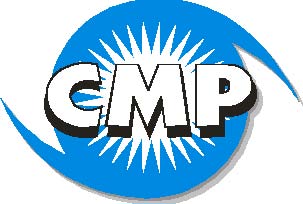
CFV stops circulating films, focusing on videos and also adding CD-ROMs and other multimedia to its collection. CFV is renamed the Captioned Media Program (CMP).
Accessibility information is beginning to be converted to digital format, and a clearinghouse of information of how to caption, how to utilize captioned media in learning, sources of captioned movies and educational videos, and other information is being made available.
2001
The two CMP grants (one for selection/captioning and another for distribution) are combined, and NAD makes a successful bid to renew its CMP management for 5 additional years. One initiative of the CMP is to begin captioning some titles in Spanish, and within two years has 109 Spanish-language titles. The CMP begins phasing out its services to adults due to its funding source being the Individuals with Disabilities Education Act (IDEA) and due to the proliferation of closed-captioned movies on television and through video rental stores.
The CMP, through a cooperative agreement with movieflix.com, makes a few full-length open-captioned classic movies and television programs available on the Internet.
2002
Through its website, the CMP begins streaming videos, providing the country's first-ever streamed, educational open-captioned videos through the CMP website. Users are required to download RealPlayer (free), with all streaming being displayed in that separate application. Over 500 titles are available with English captions and 46 in Spanish. Broadband supports up to 70 simultaneous users.
CMP media catalogs are available online as well as in printed form. Lesson guide production is in full swing with 528 guides being produced in 2001 and 2002.
There are 9,000,000 hits to the CMP website this year.
2006
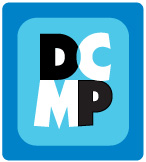
The ED announces its priority to now incorporate accessible described media for students who are blind or visually impaired into program service. The NAD is successful in its bid to offer services as directed, and the CMP becomes the Described and Captioned Media Program (DCMP). DCMP immediately begins plans with the American Foundation for the Blind (AFB) for the development of guidelines for adding description to educational videos. As soon as possible, all new DCMP videos are to be described as well as captioned.
As DCMP begins, the national network of CMP depositories is eliminated. The program also drops all video (VHS) circulation, distributing educational media through streaming and DVD copies from the main DCMP office. Budgets were cut, with annual budgets being approximately $1.5M through this grant cycle and the next (2011-2016). One casualty of cuts is lesson guide production.
DCMP partners with the NEA by promoting the fact that, for almost everyone, captions act as an instant reading incentive. The goal is to increase demand for captioned media, and lessen the gap in accessibility for children who are deaf. This DCMP initiative is called "Read Captions Across America" (RCAA). This event is destined to continue until the present, being kicked off annually on the March 2 birthday of Dr. Seuss (children's author).

DCMP pledges to meet the ED mandate to provide 25% of its media with Spanish-language captioning and description. DCMP forms a partnership with Dicapta, the first company to provide Spanish-language video description in the United States. Dicapta will perform Spanish captioning and description of DCMP media and the promotion of the DCMP services. (The ED continues to mandate this priority in the next two grant cycles, 2011 and 2016).
DCMP partners with CaptionMax in that company's two "Emerging Technologies" federal grants by distributing products of the grant activities to DCMP members. CaptionMax provides special features on DVDs which include interactivity in captions (clickable words and phrases) and viewer choice of either verbatim or edited captions. For viewers who are visually impaired, autoplay spoken menus and voiced navigation instructions are also provided.
2007
DCMP conducts a survey of the top educational media producers and confirms that out of thousands of products, only about 25% are captioned and less than 5% are described. The 1996 law mandating closed captioning of television programming has caused a gradual increase in captioning of educational media, but this media is still largely inaccessible to students who or deaf or blind.
2008
The DCMP starts a YouTube channel, with goals of utilizing this outlet in promoting the program, advocating for accessibility, and providing accessibility information.
The Description Key, guidelines for adding description to videos, is completed and posted on the DCMP website. This document is the result of two-years' effort by the DCMP, the AFB, and a selected group of expert advisors. It contains instruction for what to describe in a video and how to do it, along with an overview of technical issues and identifying resources that provide more information.
The Captioning Key, captioning guidelines initially made available by the program two decades ago, is completely revised for the web by the DCMP.
DCMP, in conjunction with Jacksonville State University (JSU) in Alabama, produces a training video Equal Access in the Classroom (EAIC). EAIC is designed for teachers, and it defines description and captioning and provides examples of them, offers teacher testimony supporting the need for these accessibility options in educational media, and overviews the DCMP services. This product is critically needed to promote DCMP and to support advocacy for accessibility. It marked the first time DCMP was involved in a video production. Destined to follow were additional productions with JSU in 2010 (a series of sign language vocabulary videos) and in 2011 (a series of videos to teach others how to add captions to already created media), the latter being available on the DCMP YouTube channel and on JSU's iTunes U site.
The National Media Market (NMM) is an annual event held in different parts of the country, and it is sponsored by educational media producers for people in their industry and buyers. DCMP, an occasional attendee of NMM through the years, attends this year and takes its advisory board. The DCMP is invited to make its first-ever presentation to the group, and both staff and board members provide an overview of description and captioning. During the coming days at the NMM, the board also evaluates the new items media producers have to offer that may meet DCMP priorities for purchase, all the while advocating for companies to add captioning/description to their media. DVD copies of the EAIC production are given to NMM participants.
2009
DCMP launches its Facebook page, making it easier for clients and others to track activities and services in the program. Twitter is also used to promote DCMP services.
Google introduces machine-generated automatic captions on YouTube, combining Google's automatic speech recognition technology with the in-place YouTube caption system. Partners for the initial launch include University of California Berkeley, Stanford, MIT, Yale, UCLA, Duke, University of California Television, Columbia, PBS, National Geographic, Demand Media, and the University of New South Wales. DCMP is also immediately added to the partners list. The DCMP is now an official national partner of AFB and NAPVI's "Family Connect," a social network and resource center for parents and family members of children with visual impairments.
DCMP launches "Listening is Learning" (LIL) as a one-of-a-kind campaign focusing on the benefits of using description both with its intended audience (people with visual impairments) and the larger population (those without visual impairments), specifically in the field of education. The American Council of the Blind and the International Listening Association are recruited as partners. This activity is part of a huge effort by the DCMP to encourage producers to voluntarily add description to their media. Each year the campaign kicks off in March, which is designated as International Listening Month.
DCMP announces that its "RealPlayer Era" has run its course in the program, as DCMP streamed videos can now be viewed in any browser with Flash Player installed. This new format results in much higher technical quality in its streamed videos.
DCMP solicits input from teachers of students with visual impairments (TVIs) around the U.S. in an attempt to measure the awareness of the availability of described educational video-based media (i.e. video) and to uncover trends concerning overall video usage among TVIs. An online survey was publicized by way of various email lists, websites, and professional development organizations. This effort results in 222 unique responses. 86% of the respondents are familiar with the concept of description, and 45% use video in their classrooms. Of the teachers who use video in their classrooms, 71% report that few (less than 25%) to none of the videos they use in class are available with description. In contrast, 5% reported that they won't use video unless it's described.
2010
Google officially launches English auto-captions on YouTube, after the 2009 limited launch. DCMP teams with Google and provides a YouTube captioning quality evaluation to vendors, with those vendors passing this evaluation being added to a "'YouTube Ready' Qualified Captioning Vendors Listing" which is posted on the Internet.
2011
NAD wins the 5-year cooperative agreement to continue management of DCMP, with an annual budget of $1.5M. Jason Stark, who has been with the program since NAD's first successful bid in 1991 to manage it, becomes DCMP Project Director. Most recently, he has performed as the DCMP Information Technology Director. Bill Stark moves to a halftime DCMP position and semiretirement.
A two-year federal grant is awarded to Smith-Kettlewell company to investigate innovative technologies and techniques for making online video more accessible to blind and visually impaired students and consumers. The project is named the Video Description Research and Development Center (VDRDC), and DCMP becomes one of the VDRDC Description Leadership Network collaborators. Among its contributions to the VDRDC effort is DCMP's development of a one-of-a-kind fully accessible webinar platform. DCMP then hosts and provides technical support for webinars conducted by the VDRDC. Dicapta translates the Captioning Key into Spanish for the DCMP.
2012
Netflix and the NAD reach historical agreement on a lawsuit filed by the NAD in 2011 alleging that Netflix did not provide equal access to its streamed content, and Netflix agrees (along with other provisions) to provide captioning "consistent with the DCMP-certified captioning house quality standards…"
Early in the year, DCMP reaches 1,000,000 total views on its YouTube channel. By the end of the year, the number had reached 2,000,000.
2014
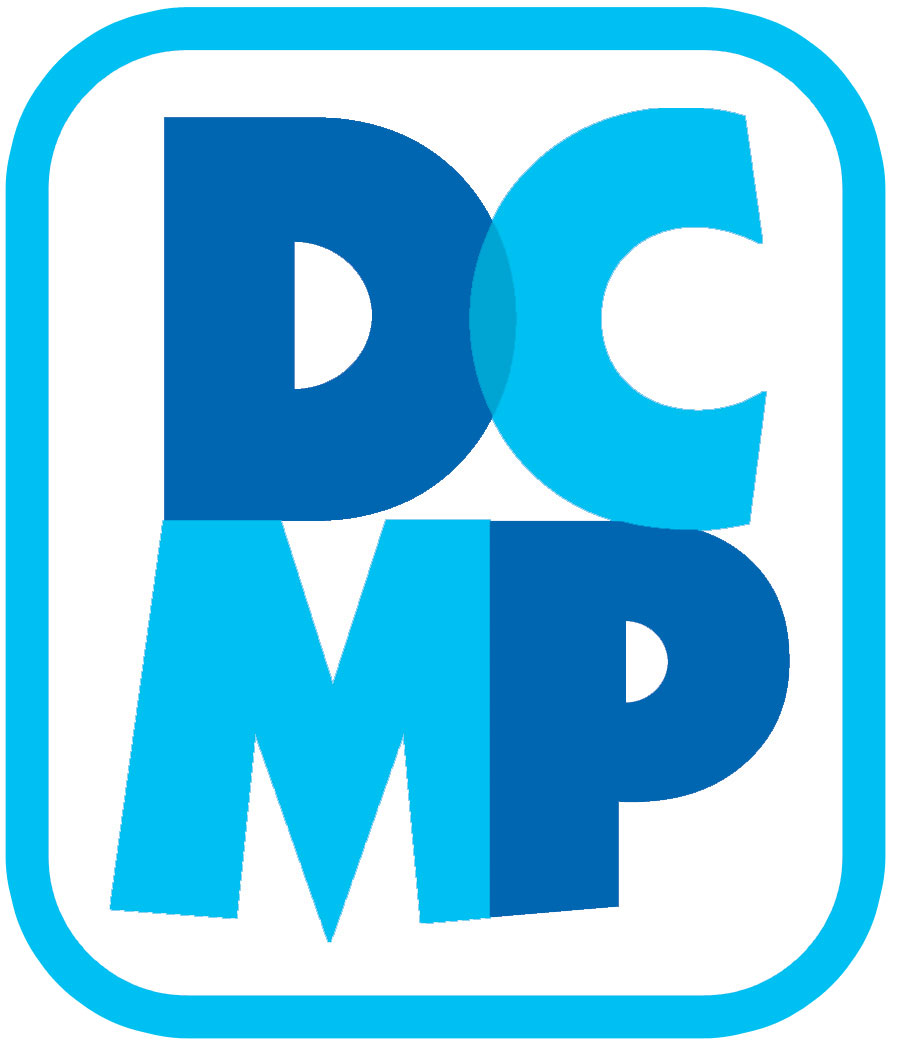
DCMP announces that it has developed a new interactive transcript tool, used in conjunction with the core media player as provided by Limelight. While viewing DCMP streamed media, users can search the captions (transcript) to quickly locate a specific concept, and then, with one click, can jump to that point in the video to view the segment. The new DCMP tool also allows members to scroll through the transcript.
For the first time in the history of its program, DCMP begins allowing direct student access to its described and captioned media content. To support teachers and parents as they guide and mentor students in the learning process, the DCMP announces that student subaccounts can now be created.
DCMP launches a channel on Roku, a streaming set-top box with thousands of channels including Netflix, HBO, Showtime, ESPN, and History Channel. The Roku uses existing Wi-Fi, with a HDMI connection to a television or projector. DCMP's is the only channel in the nation with fully accessible educational material. DCMP video content can now be embedded into a member's LMS (Learning Management System), or CMS (Content Management System, such as WordPress), or virtually any other HTML-based web presentation.
The Captioning Key is referenced and cited within the FCC's Closed Captioning Quality Report and Order, Declaratory Ruling, FNPRM.
2015
DCMP announces the development of a native iOS app for iPhone, iPod Touch, and iPad users. Apple approves the app, and it is offered for free download to DCMP members.
Quality television programs have been made accessible for a few years through DCMP and through recipients of five Department of Education (ED) funded television access grants. DCMP now partners with these grantees and their content partners to make their accessible content available to DCMP members, distributing it through an "Accessible Television Portal" on the DCMP website.
2016
NAD again wins the DCMP 5-year grant award competition, with annual budgets increasing to $2M a year. Jason Stark continues as Project Director.
The Captioning Key and the Description Key are revised to be compatible with mobile devices. Since their inception, they both have risen to the level of thousands of web visits each month. DCMP serves 124,000 members with a collection of 5,500 accessible titles (including 886 captioned and/or described titles in Spanish).
Over 95% of all DCMP user transactions are of streamed media, with 5% being DVDs delivered by mail. From a limitation in 2002 to 70 simultaneous users, there is now virtually no limit to that number.
The DCMP website has annual hits of 20,000,000.
Accessibility information available through the DCMP Learning Center remains an important activity. Over 300 original articles are included and mechanisms are in place to search over 60,000 items on collaborators websites.
Also available are over 3,100 lesson guides and related materials for parents and teachers. Components of guides include identification of related academic standards and suggestions for before, during, and after viewing.
DCMP's YouTube channel now has over 11,000,000 lifetime views. A formal survey by the DCMP of the top media producers/distributors in the U.S. confirms that only 60% of the educational media is captioned and under 3% is described, with no perceivable increase in these percentages in the last five years. Laws beginning in 1996 which mandated captioning of television programming have had positive impact on educational media access, but there is still a significant lack of equal access.
About the Author
Bill Stark helped make some of the early history of CFD, now named Described and Captioned Media Program (DCMP), as he had been with the program on an almost continuous basis since 1966. He first served as a CFD depository manager in a residential school. He had also been a film and video evaluator, a captioner, a summer lesson guide workshop administrator, a consultant, and served as Projector Director for over 20 years.
References
Boatner, Edmund Burke. "Captioned Films for the Deaf." Described and Captioned Media Program. 4 May 2016. https://dcmp.org/public_content/caai/nadh93.pdf.
Brill, Richard G. The Conference of Educational Administrators Serving the Deaf: A History. Washington, D.C.: Gallaudet University Press, 1986.
Gough, John A. "Report from Captioned Films for the Deaf." University of Nebraska. 1968. Described and Captioned Media Program. 15 July 2016.https://dcmp.org/public_content/caai/nadh92.pdf.
Hicks, Dion. "Captioned Films for the Deaf: Curriculum Workshops, Ball State University, 1964-1968." 2016. Described and Captioned Media Program. 4 Aug. 2016. https://dcmp.org/ai/376/.
Norwood, Malcolm J. "Future Trends." 2008. Described and Captioned Media Program. 12 Aug. 2016. https://dcmp.org/public_content/caai/nadh82.pdf.
Norwood, Malcolm J. "Just Don't Scramble the Wrong Egg." 1980. Described and Captioned Media Program. 7 Mar. 2016. https://dcmp.org/public_content/caai/nadh83.pdf.
Novick, Len. "Captioned Films for the Deaf: My Perspective." 2016. Described and Captioned Media Program. 2 Aug. 2016. https://dcmp.org/ai/375/.
Propp, George. "An Overview of Progress in Utilization of Educational Technology for Educating the Hearing Impaired." University of Nebraska. 1978. Described and Captioned Media Program. 5 July 2016. https://dcmp.org/public_content/caai/nadh105.pdf.
Stark, Bill. "The Logic of the Motion Picture in the Classroom." March 2010. Described and Captioned Media Program. 18 July 2016. https://dcmp.org/public_content/caai/nadh254.pdf.
Stepp, Robert E. "An Introduction to the 1978 Symposium on Research and Utilization of Educational Media For Teaching the Deaf." University of Nebraska. Described and Captioned Media Program. 5 July 2016. https://dcmp.org/public_content/caai/nadh146.pdf.
Tags:
Please take a moment to rate this Learning Center resource by answering three short questions.
